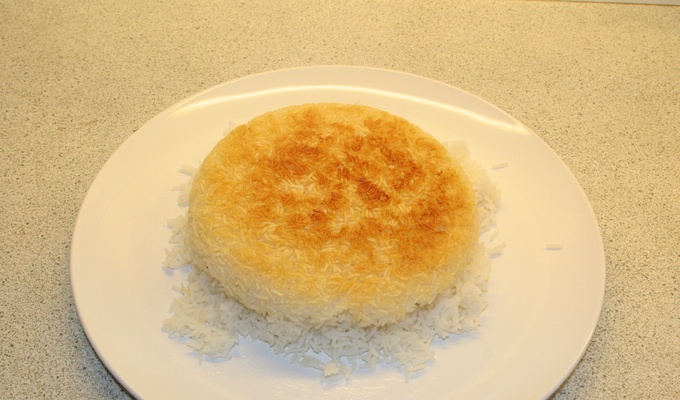Okoge is the Japanese term for the crisp or scorched outer crust of food, especially a cooked pot of rice.
Until electric rice cookers came into common use in the 20th century, rice in Japan was cooked in a kamado, a traditional stove heated by wood or charcoal. Because regulating the heat of a wood or charcoal fire is more difficult, a layer of rice at the bottom of the pot would often be slightly burned during cooking; this layer, called okoge, was not discarded, but was eaten with vegetables or moistened with water, soup, or tea.
Okoge is still eaten in Japanese cuisine, and is an important part of the kaiseki meal served at tea ceremonies, where it is typically served with hot water and pickles as the final course. It has a crispy texture and a nutty flavour.
Because the cooking temperature of modern electric rice cookers is precisely controlled, okoge does not usually form naturally during the cooking process. However, there are rice cookers on the market in Japan that have an okoge setting. Okoge can also be made by scorching cooked rice in a frying pan.
